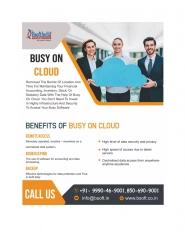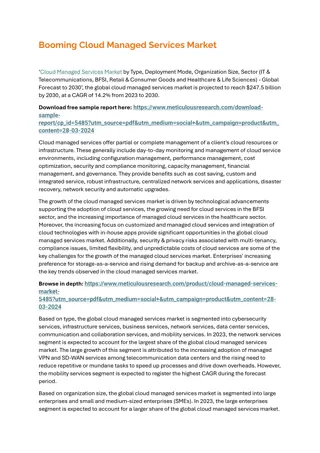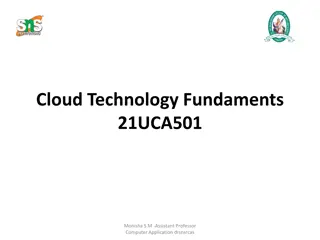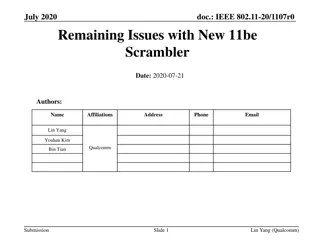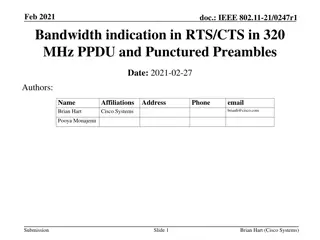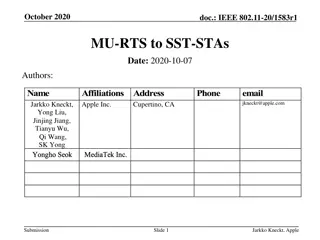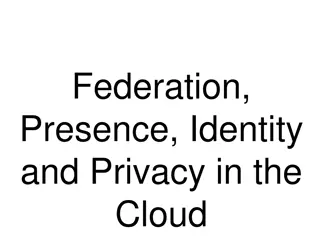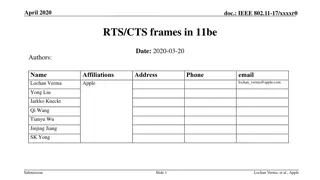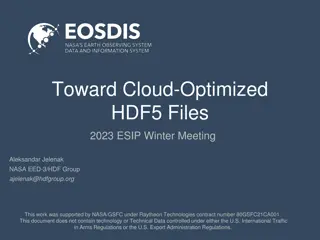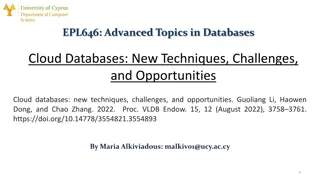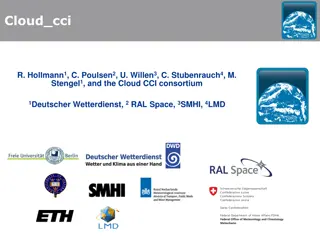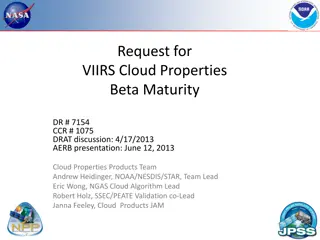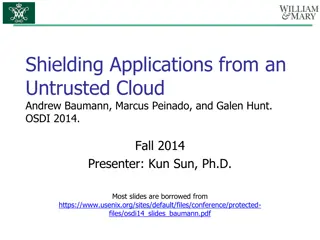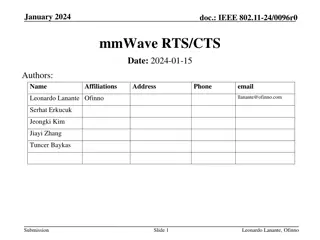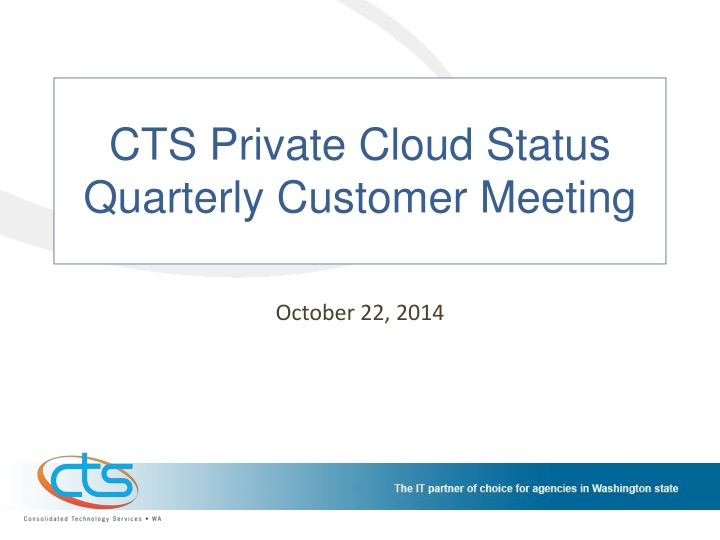
Private Cloud Service Strategies and Benefits for CTS Customers
"Discover how CTS transforms virtual server services into automated offerings comparable to public cloud providers. Explore the benefits of self-service provisioning, secure infrastructure, and future cloud features. Learn about resource allocation models and pay-as-you-go options for tailored service solutions." (295 characters)
Download Presentation

Please find below an Image/Link to download the presentation.
The content on the website is provided AS IS for your information and personal use only. It may not be sold, licensed, or shared on other websites without obtaining consent from the author. If you encounter any issues during the download, it is possible that the publisher has removed the file from their server.
You are allowed to download the files provided on this website for personal or commercial use, subject to the condition that they are used lawfully. All files are the property of their respective owners.
The content on the website is provided AS IS for your information and personal use only. It may not be sold, licensed, or shared on other websites without obtaining consent from the author.
E N D
Presentation Transcript
CTS Private Cloud Status Quarterly Customer Meeting October 22, 2014
Private Cloud Service Strategy Transform the current CTS virtual server service into an automated service offering comparable to commercial public cloud providers. On-demand self-service portal Capability to automatically provision, de-provision, archive compute resources Secure multi-tenant infrastructure with complete business unit isolation Role based access control Templates to support specific use cases Automated billing processes 2
CTS Private Cloud Benefits Benefits Self-service provisioning reduces the time to deploy new servers and services for customers Access to State Networks Access to Enterprise Active Directory Infrastructure in a nearby highly secured Data Center Constant monitoring of infrastructure for security threats Localized control
Future Cloud Features Infrastructure As A Service (IaaS+) Add Non-Windows Operating System (OS) Templates Provide Database and Other Server Type Templates Integrated Anti-Virus Virtual Firewalls Application Load Balancing Integrated Backup Disaster Recovery 4
Initial Service Options Resource Allocation Models No resources are allocated up front. All resources are allocated per workload. This service offering lends itself to quick-start pilot projects or test and development application workloads that typically do not require persistent resource commitments or upfront resource reservations. Basic Pay-as-you-go VM Instances 100% of resources are reservation-guaranteed. Based on the Reservation Virtual Data Center (VDC) Pool allocation model. This service offering provides consumers reserved resource capacity up front, fully dedicated by individual tenant. The level of resource guarantee (always set to 100%) provides customers with a high degree of service assurance plus resource control for their application workloads. Dedicated VDC Pool 6
Initial Service Options Pay-as-you-go (PAYG) Single VM Instances Minimum Configuration: 1 vCPU; 4 GB Memory; 100 GB Storage Components can be added in these increments: Virtual CPU 1 vCPU increments Memory 1 GB increments Storage 1 GB increments Dedicated (VDC) Reserved VM Resource Pool Minimum Configuration: 10 GHz Reserved CPU; 20 GB Reserved Memory; 1 TB Storage Components can be added in these increments: Reserved CPU 2 GHz increments (2 GHZ equals 1 vCPU) Reserved Memory 10 GB increments Storage 10 GB increments 7
Proposed Rates Resource Rate One-time Set-up Fee for New Customer Agency $700 Resource Pay As You Go Hourly Rates vCPU (Core/Hour) $0.1015 Memory (GB/Hour) $0.0225 Storage (GB/Hour) $ 0.00024 Resource Dedicated Hourly VDC Rates Reserved CPU (GHz/Hour) $0.0508 Reserved Memory (GB/Hour) $0.0225 Storage (GB/Hour) $ 0.00024 8
Cost Examples for November Pay-as-you-go (PAYG) Single VM Instances Configuration: 1 vCPU; 4 GB Memory; 100 GB Storage $155 Configuration: 4 vCPU; 12 GB Memory; 500 GB Storage $572 Dedicated (VDC) Reserved VM Resource Pool Configuration: 10 GHz Reserved CPU; 20 GB Reserved Memory; 1.0 TB Storage $ 859 Configuration: 50 GHz Reserved CPU; 100 GB Reserved Memory; 2.5 TB Storage $3,871 9
Pilot Pilot Period: August 1 October 15. There were 3 agencies participating along with CTS. The agencies include: LNI UTC DRS Pilot participants will provide feedback on self-provisioning user interface and on-boarding process. 10
Customer Onboarding Each new customer agency will complete an onboarding document. Collected information includes: Agency Name Primary Management Contact (Who approves creation of new servers) Primary Technical Contact Primary Billing Contact Primary After Hours Contact Service Catalog Options (e.g. Pay-as-you-go or Dedicated) Agency Active Directory Domain <Customer will need to set up some AD Group and User Accounts for Admin and notifications> Business Group(s)<With billing account numbers> VM Provisioning Approval (Who can provision) VM Migration (Is there an existing virtual environment that needs to be migrated to the Private Cloud) Existing Networks (What VLANs are used) New Networks (Do new network connections need to be implemented) 11
Next Steps Complete internal Rate Review with CTS Finance Office Start migrations of CTS Services server infrastructure to the Private Cloud Populate Private Cloud CTS ASK site with information: https://sp.cts.wa.gov/ask/cloud/SitePages/Home.aspx Add Private Cloud Interest Survey Form to ASK site for agencies currently not using CTS server infrastructure services 12
Q&A 14

